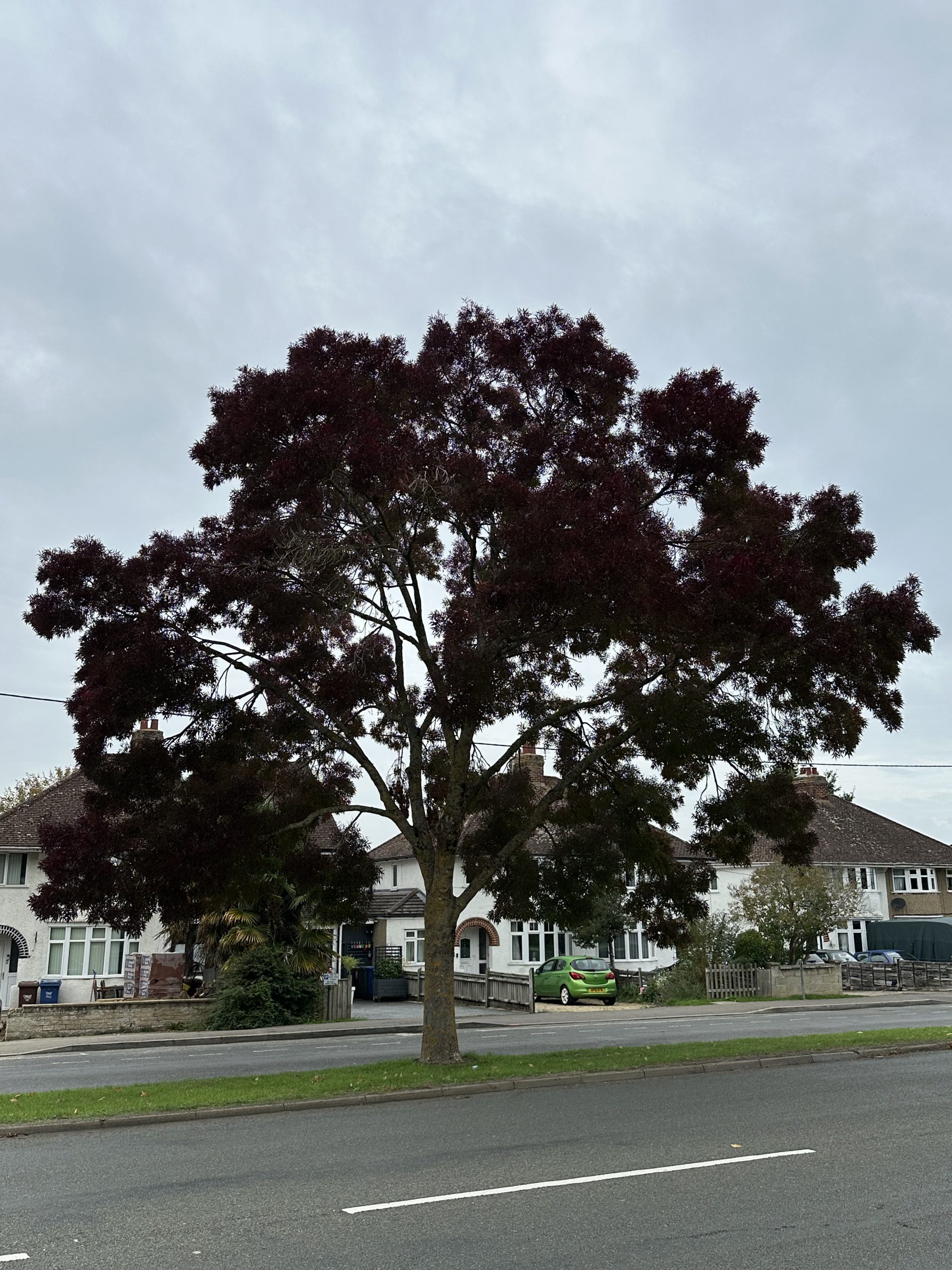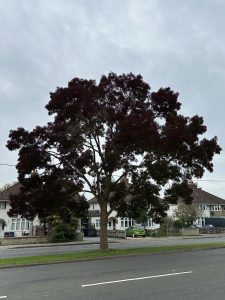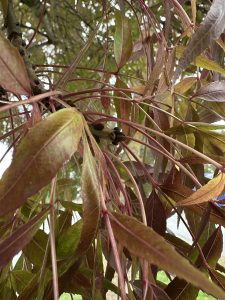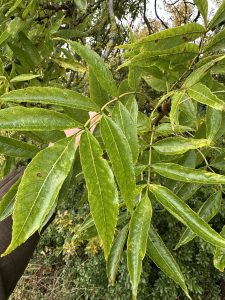
27 Oct Raywood Ash
Raywood Ash (Fraxinus angustifolia subsp. oxycarpa ‘Raywood’)
The Raywood ash, often known as the Claret Ash, is a medium-sized, deciduous tree celebrated for its elegant form and spectacular autumn colour. A cultivar of the narrow-leaved ash native to southern Europe and western Asia, the Raywood ash was first discovered in South Australia around 1910 at Raywood Gardens near Adelaide, hence its name. Originating from a single tree, it was introduced to Britain in 1928 and has since become an international favourite for its ornamental beauty and adaptability. It embodies the modern tradition of cultivating elegance and resilience – a tree bred for beauty yet rooted in the ancient heritage of the ash genus.
The Raywood ash is primarily grown as an ornamental tree, valued for its fine foliage and rich autumn colour. Its neat shape and moderate size make it ideal for avenues, large gardens, and parkland plantings. It performs particularly well as a feature or specimen tree, where its seasonal transformation can be fully appreciated.
Its wood, like that of other ashes, is strong and elastic, traditionally used for tool handles, furniture, and sports equipment. However, Raywood is rarely harvested for timber today. Instead, its contribution is aesthetic – cooling city streets, adding structure to rural landscapes, and providing visual drama in autumn.
Appearance and Identification
Typically reaching 10–15 metres (35–50 feet) in height, the Raywood ash has a rounded to oval crown, composed of fine, feathery foliage that gives it a soft, textured silhouette.
Its leaves are dark green, glossy, and divided into narrow, lance-shaped leaflets. In autumn, these transform into a dramatic display of deep wine-red to claret-purple hues, among the most striking of any deciduous tree. The leaves can sometimes be confused with common ash (Fraxinus excelsior) but are narrower and the buds are small and brown, rather than big and black.
Common ash leaves
The bark is smooth and grey-brown when young, developing shallow fissures with age. It produces small, inconspicuous flowers in the spring, followed by winged seeds.
Propagation and Control
Raywood ash thrives in full sun and well-drained soils, preferring slightly alkaline to neutral conditions. It is drought-tolerant once established, making it well-suited to Mediterranean and temperate climates. However, it dislikes waterlogging or heavy clay soils, which can lead to root stress and eventual decline. It grows best in areas with warm summers and cool winters, performing admirably in both urban and rural settings.
Its weakness is a susceptibility to a condition known as Raywood decline which results in gradual branch dieback, leaf scorch and premature leaf drop. In addition, like other ash species, it is vulnerable to ash dieback disease (Hymenoscyphus fraxineus) in regions where the fungus is present. While this tree is generally planted in public open spaces, it does have a propensity to shed limbs unexpectedly and therefore while it provides vibrant autumn colour, the position of planting should be considered in relation to current and future targets.
Source and Reference Materials
Information detailed in this post has been obtained from the author’s own knowledge and photographic library where possible. Additional source of information and photographs include:
Van den Berk, B.V. (2004). Van den Berk on Trees. Van den Berk Nurseries



